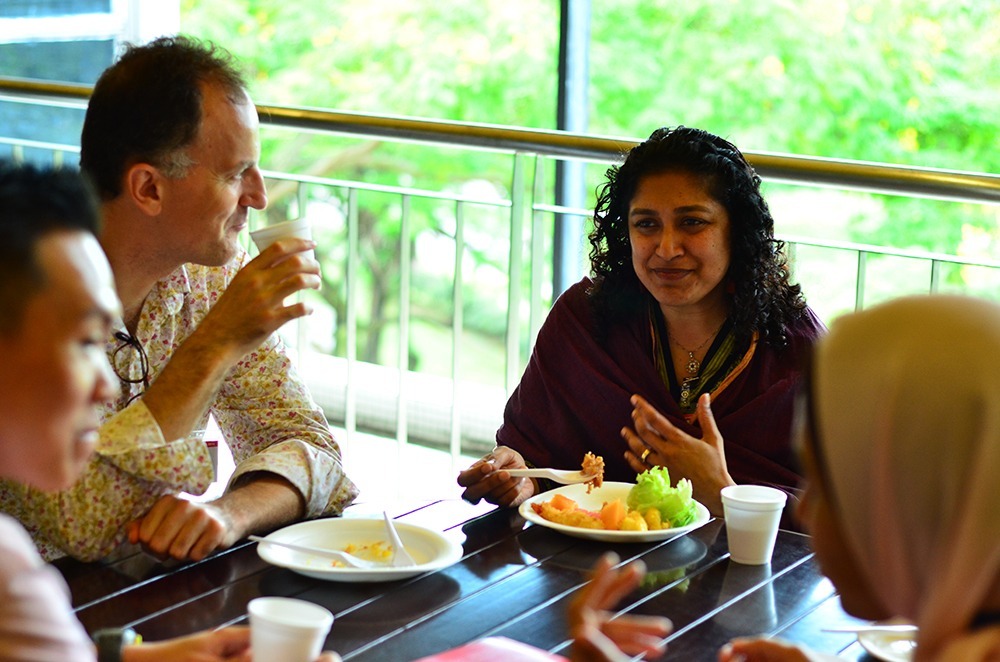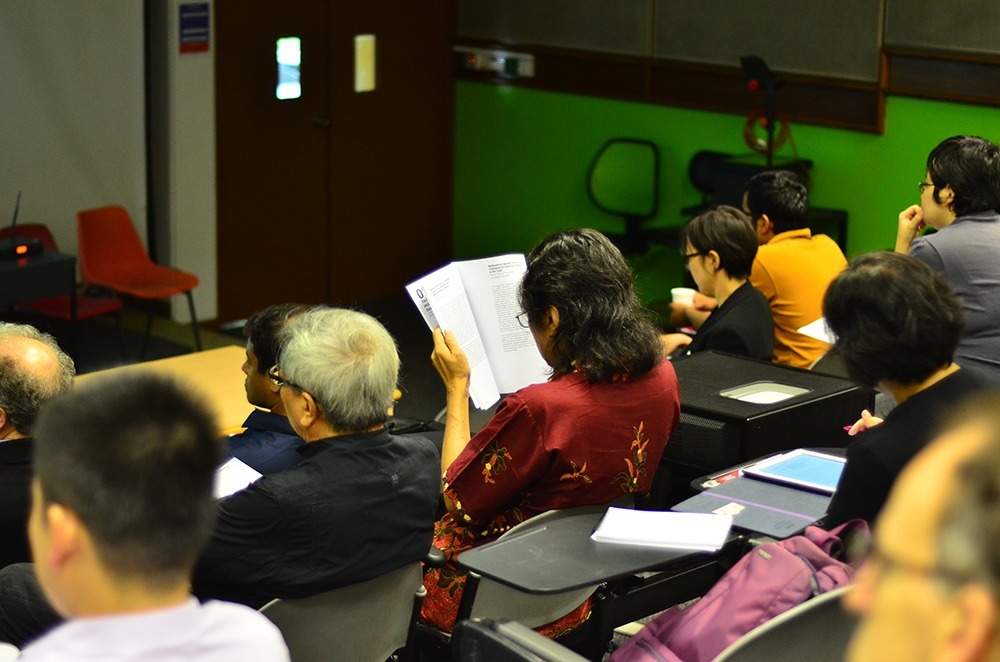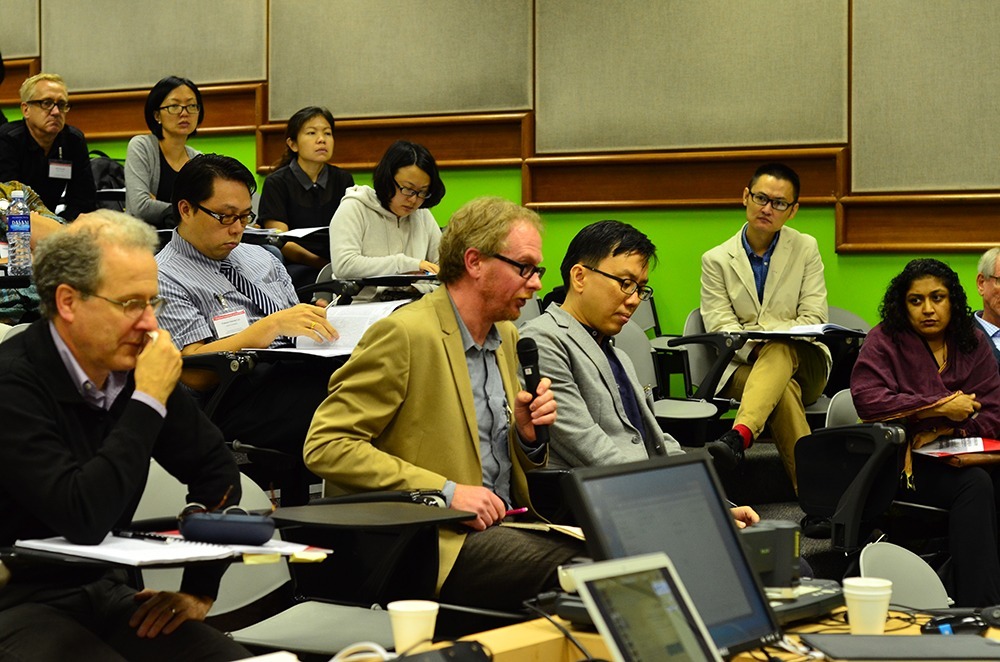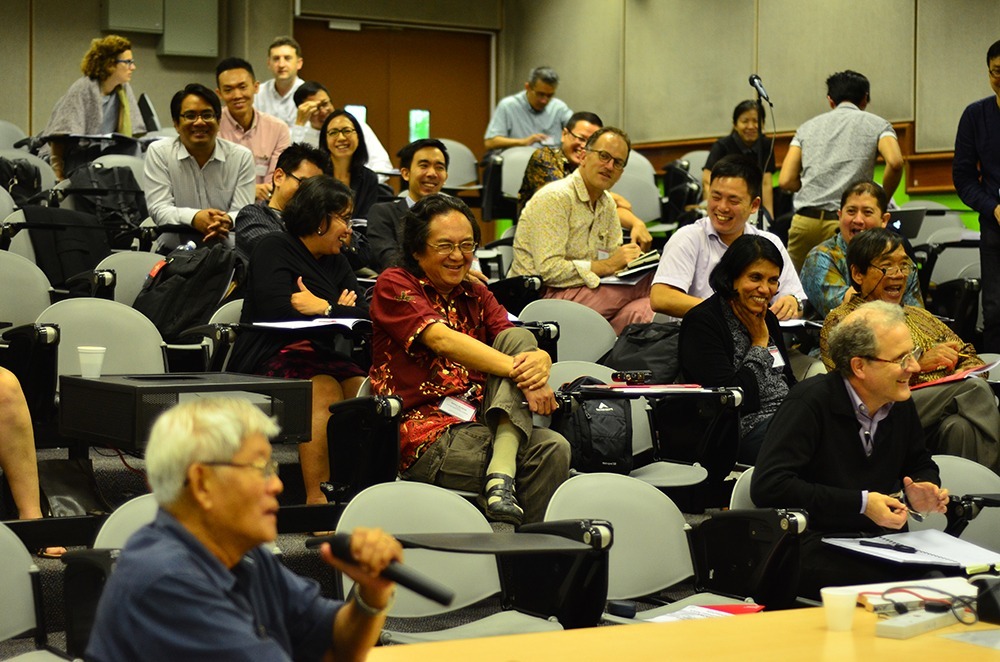History, Theory, Criticism
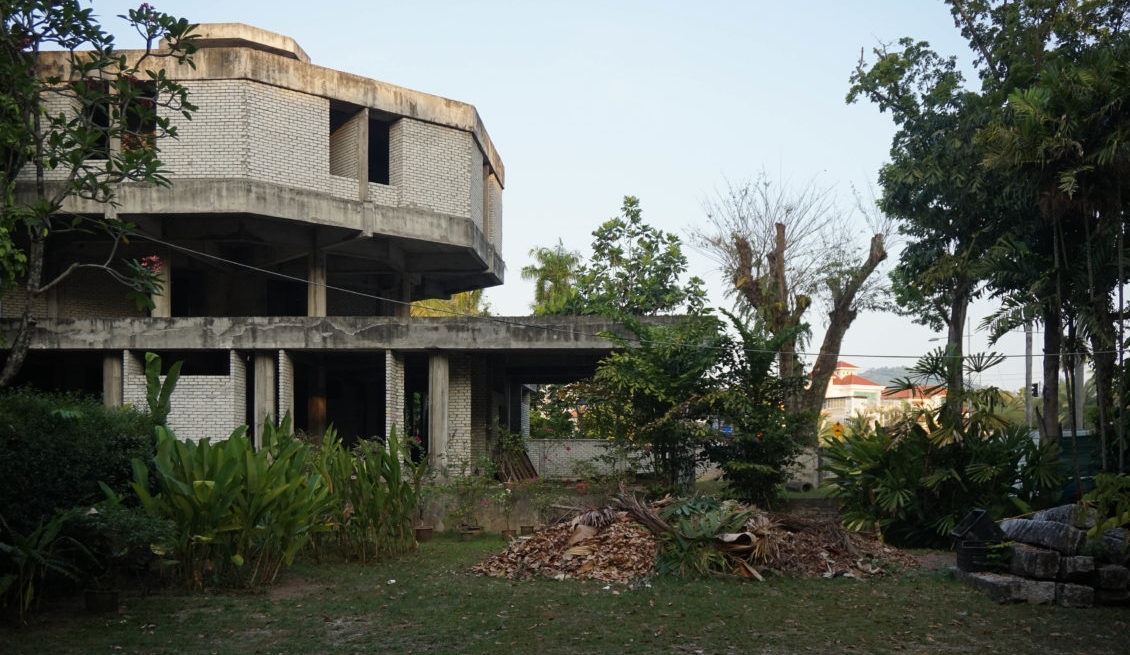
About
The Southeast Asia Architecture Research Collaborative (SEAARC) is a group based at the Department of Architecture, National University of Singapore. SEAARC was founded by three faculty members – (in alphabetical order) Chang Jiat Hwee, Imran bin Tajudeen, Lee Kah Wee – to promote the teaching and research of the built environment in Southeast Asia.
The group’s research and teaching activities focus broadly on the built environment of Southeast Asia with the following emphases:
Southeast Asia in the world –
We see Southeast Asia not as an autonomous, clearly bounded geographical entity, nor as a homogeneous one. Rather we see Southeast Asia as a region inextricably connected to other socio-cultural and geopolitical regions of the world. We also see Southeast Asia as a complex region that defies some of the neat generalisations that currently characterize its study, is poised for tremendous growth both in built environment terms and in scholarship, and is simultaneously witnessing a heightened interest in knowledge relating to architectural and urban heritage, sociotechnical and cultural-environmental issues, and late capitalist development.
Interdisciplinary approach –
We take an interdisciplinary approach to our research of the built environment of Southeast Asia. While we maintain an architectural and
urban focus, our theories and methodologies are influenced by various interdisciplinary approaches. Members of this group have published their work in journals and books affiliated with various fields of research – architectural history, urban studies, area studies, vernacular studies and heritage studies.
Across different historical periods –
We strongly believe that the present is shaped by the past and we are a group that is as interested in the study of architectural histories as we are in understanding the contemporary conditions of architectural production.
2017 SEAARC

Across various disciplines, attention on the category of the “Other” has shone light on women, minorities, the poor, profane, criminal and mundane. But what and where is the category of “Others” in architectural studies? Is it to be attached to the spaces and buildings associated with these marginalized social categories? Or are there intrinsically architectural “Others” – subjects within the discipline that undergird its internal discourse through contrast and opposition – that should be opened up to interdisciplinary scrutiny? Finally, what can Southeast Asia offer to the larger intellectual debates in which the category of the “Other” has played a critical role in the last few decades?
This series of questions forms the intellectual agenda of the 2nd Southeast Asia Architecture Research Collaborative Symposium 2017. It asks not only that we broaden the types of buildings that merit serious scholarly interest, but to question if the field itself can be broadened – the range of discourses, settings, politics and practices wherein the built environment becomes a foil for understanding the hidden and suppressed aspects of societies. It seeks fresh collaboration with allied disciplines that might throw up promising directions in how one can theorize and analyze the “Other”, as well as the challenges of such projects. Four themes guide the discussions of the conference: “Challenges of the Archives”, “Teleology Fractured and Abandoned”, “Architecture and Violence” and “Types, Minor Types and Non-types”.
SEAARC 2017 Images

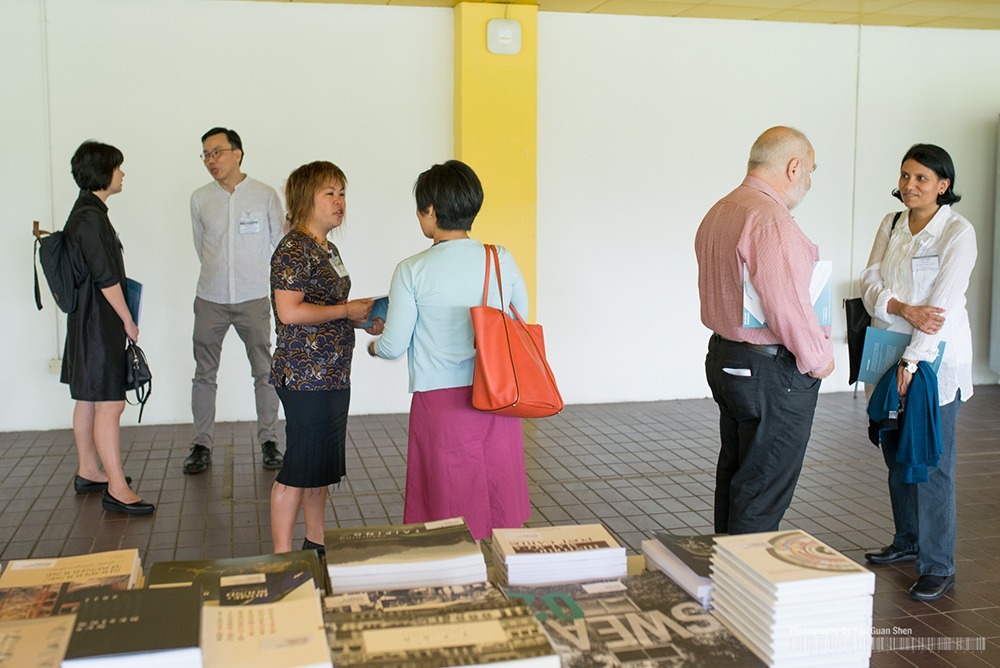

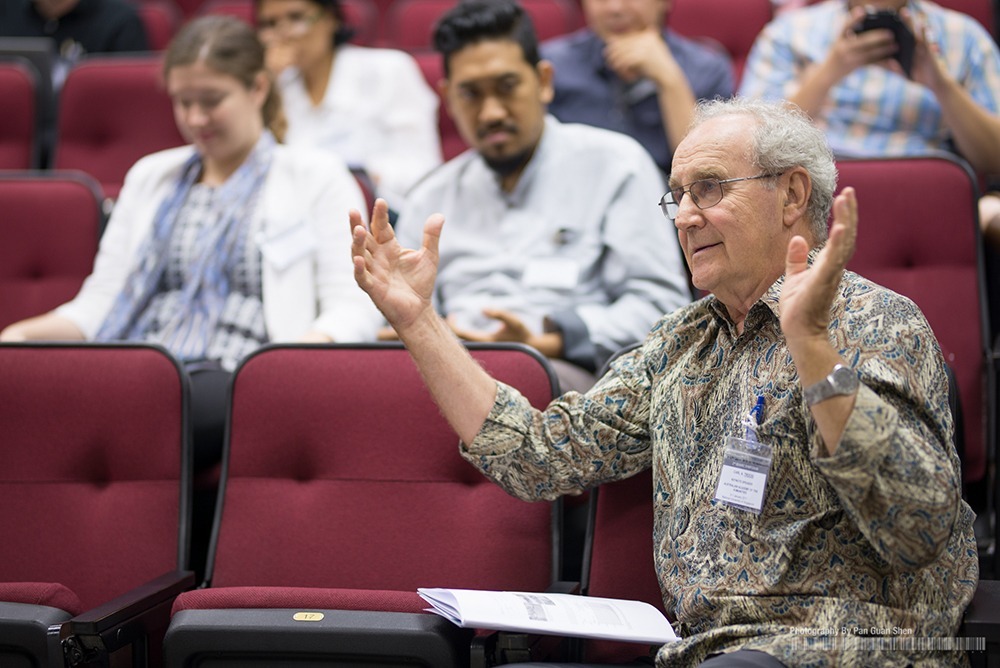
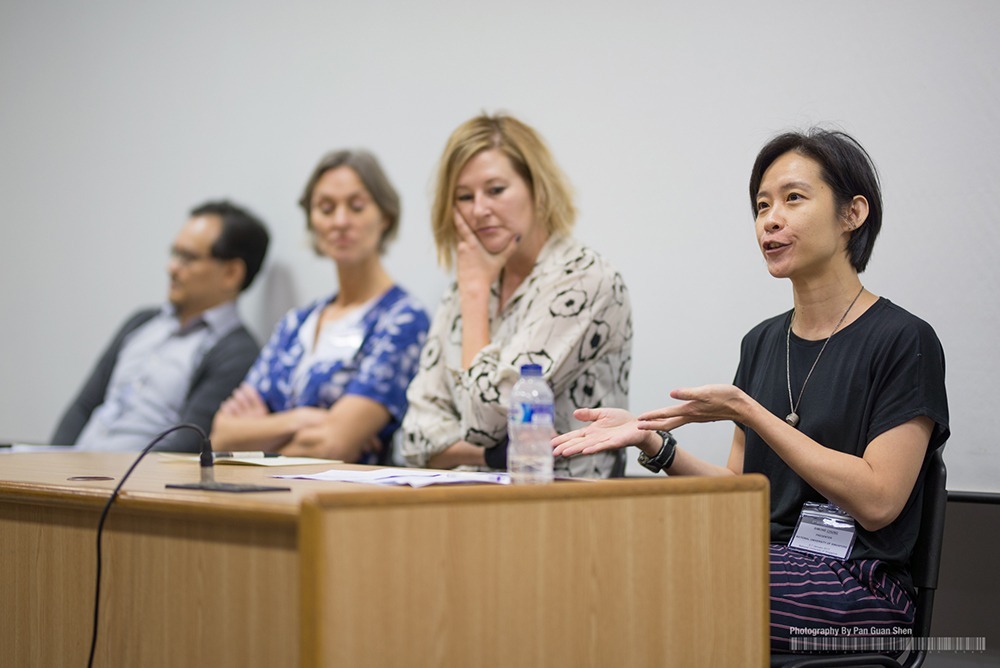
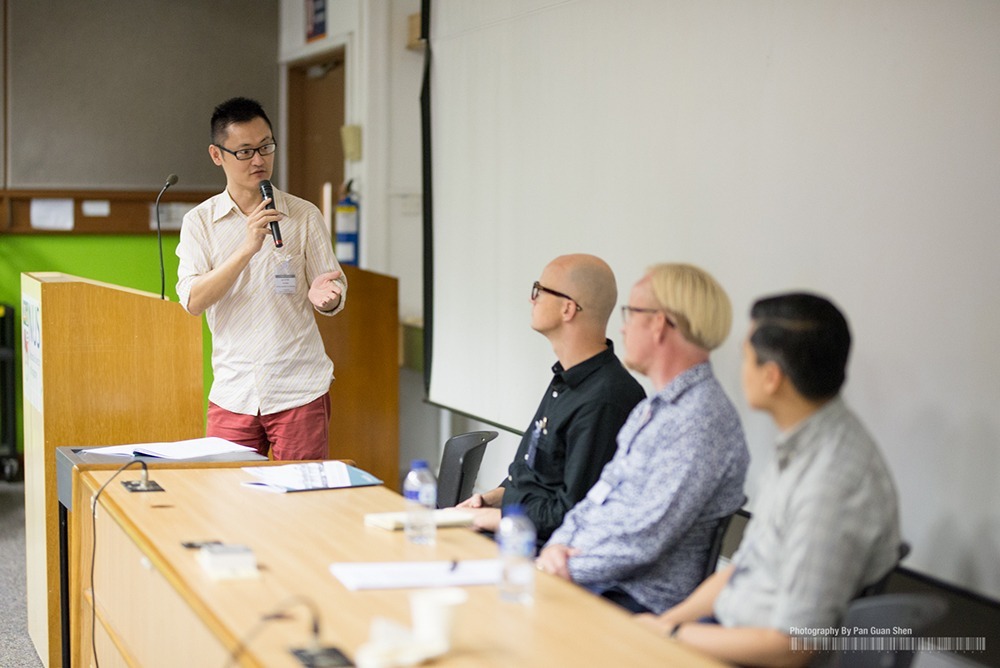
2015 SEAARC
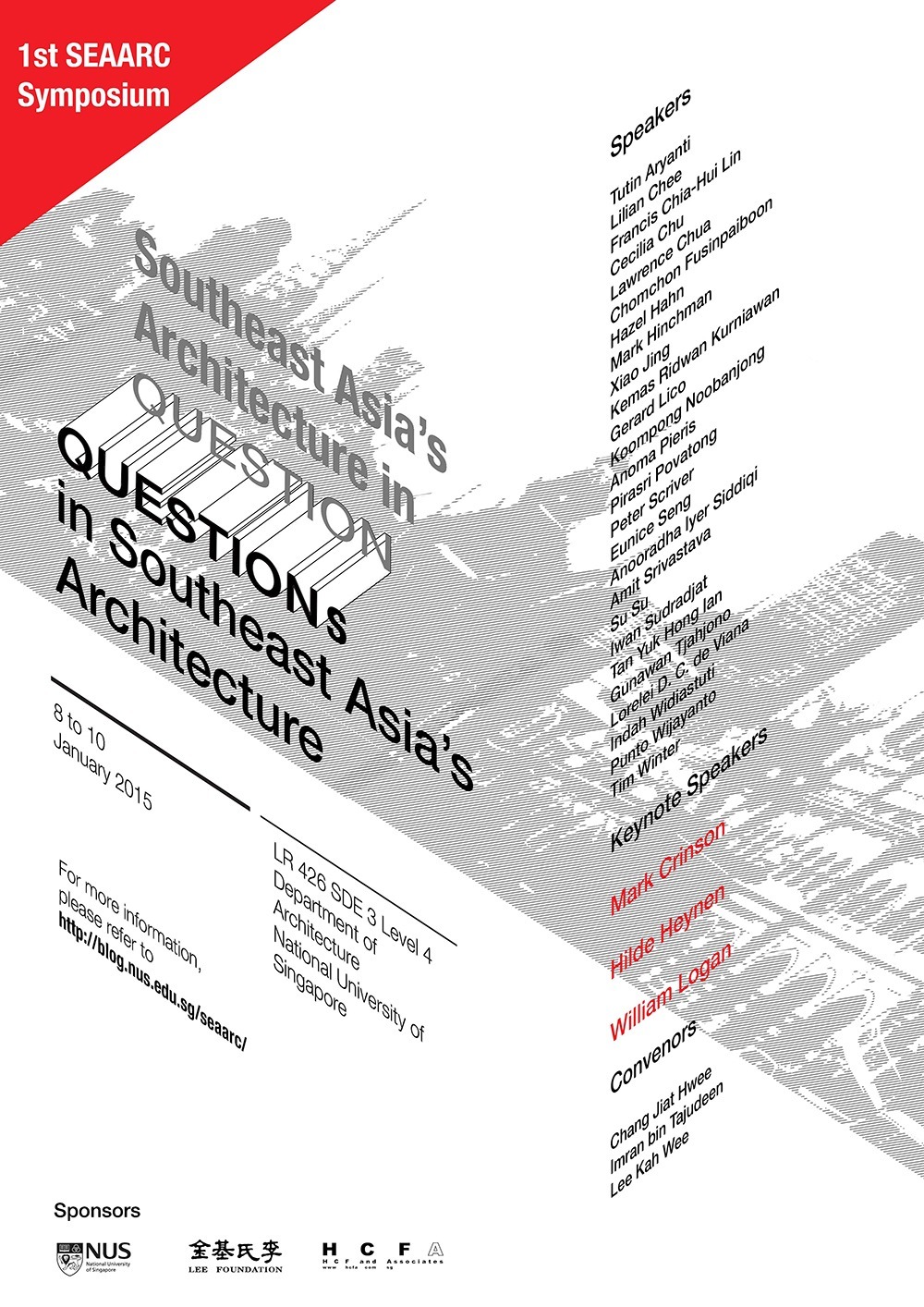
What is Southeast Asia architecture? Does the construction of Southeast Asia architecture depend on the validity of Southeast Asia as a geographic unit of analysis? In Southeast Asia studies, the cogency and usefulness of Southeast Asia as a geographic unit of analysis has been much discussed and debated. Scholars have wondered if a diverse region divided by different cultures, languages, ethnicities and religions has sufficient commonality to be productively considered as a single region. With the end of the Cold War and the crisis of Area Studies, the relevance and validity of Southeast Asia as a geographic unit has been subjected to further interrogation in the past two decades or so.
While there are scholars who question the relevance of a geographic unit of analysis that was only invented recently and by external observers for a post-Cold-War era, there are others who are keeping faith with Southeast Asia as a unit of analysis. Some argue that, as a geographic unit, Southeast Asia serves as a useful conceptual tool for framing meaningful analysis. Others contend that the polyvalency and fluidity of Southeast Asia as a geographic unit can be an analytical strength, allowing them to explore networks, flows and connections – the new emphases of globalisation studies. We share the optimism of these scholars who have kept faith with Southeast Asia. We further believe that the scholarship on Southeast Asia’s architecture need not just draw on but can also contribute to the understanding of Southeast Asia as a geo-historical unit. Architecture is after all a spatial art and it should productively shape our conception of Southeast Asia as a region.
SEAARC 2015 Images
